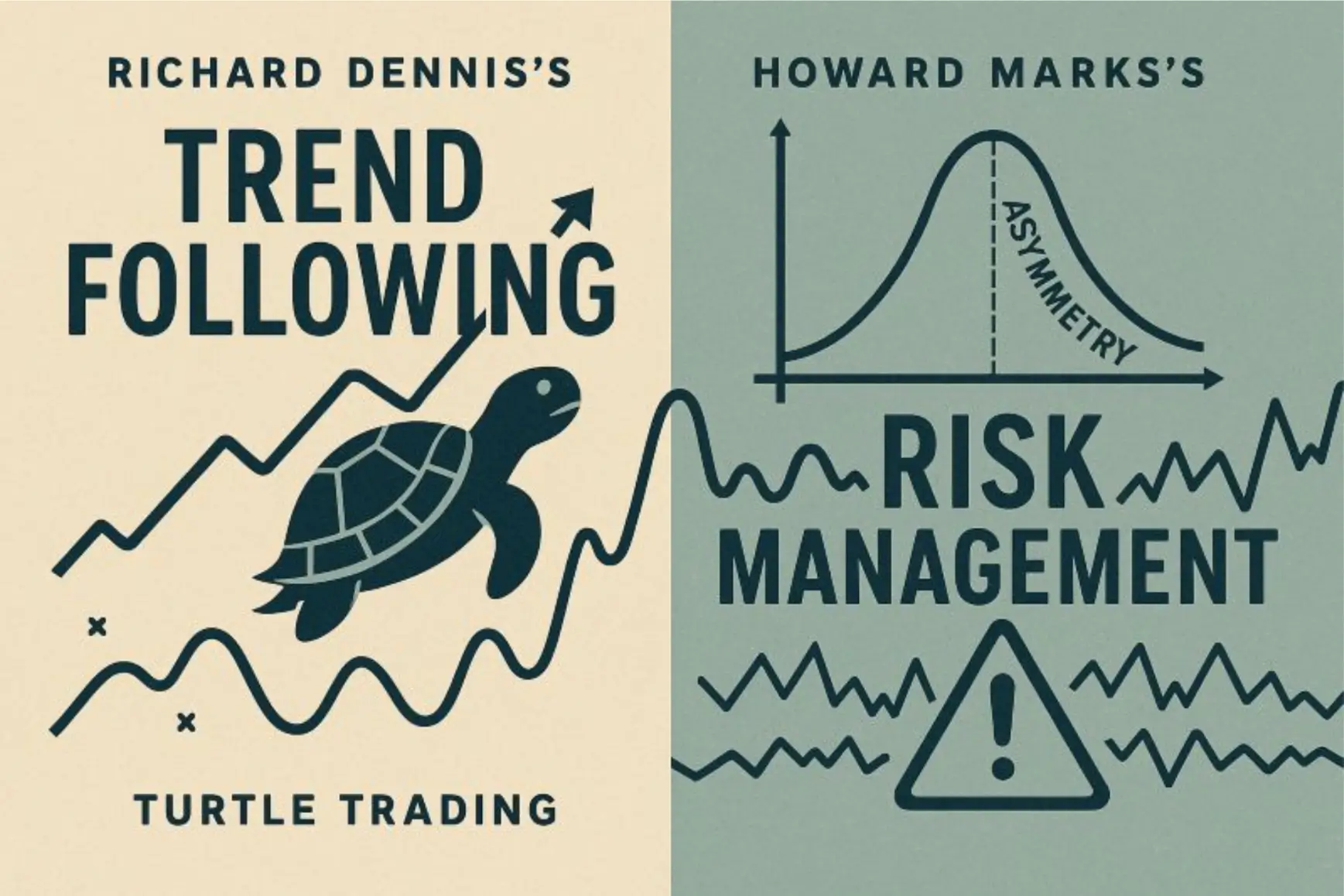Category List
Featured List


Crypto Trading Risk Management: Lessons from Richard Dennis and Howard Marks
Following a trend is a skill every successful trader has, and understanding the risks and volatility associated with crypto markets is critical for proper capital management.
In the first case, Richard Dennis is listed as one of the best trend-following traders, and in the second, Howard Marks stands out for establishing a vital distinction between volatility and risk.

Richard Dennis Lessons
As the Turtle Trading Strategy co-author with an undisputable track record, the success of Richard Dennis's trading method was based on vital risk rules to manage a position and stick to it as much as possible.
Two mindsets stand out:
- The ability to identify a trending market, open a position, and hold it as long as possible while pyramiding over it.
- The adaptability of the position size according to market volatility.
Trend Following, Pyramiding, and Cutting Losses
The principles of Dennis's trading method consist of holding a position along with the prevailing direction of a market movement.
Furthermore, he would look to add more contracts if the trade is a winner and until a reversal signal emerges.
Conversely, Dennis emphasizes the importance of cutting losses quickly and never adding to a losing trade as a critical step to capital survival.
Position Size and Volatility
By reinforcing the idea of capital management, Dennis's trading mindset acknowledges that market volatility can be mild but also wild.
Some markets may receive a boost from large price movements, while others could move with smooth fluctuations. In this sense, adaptability is crucial.
For example, the Turtle Trading Strategy utilizes the Average True Range (ATR) to measure the magnitude of price moves and lower or increase the position size according to the underlying volatility.
By adapting the position size to the market volatility, traders can reach the same expected gains while managing risks appropriately.
Howard Marks Lessons
Howard Marks has a broad range of studies on risk management, particularly on the concept of risk seen from different perspectives.
We can summarize Howard's perspective on risk in a single quote: "Risk is the probability of loss." To understand it better, let's see two of Marks' lessons on risk, volatility, and asymmetry.
Volatility And Risk
For Howard Marks, volatility is nothing more than a symptom of risk. Traders and investors could quantify volatility but not the risk.
Even after closing a successful trade, an investor could not know how much risk the investment should have had.
The risk is determined by the return expectancy over an investment, and it is "the ultimate test of an investor's skill" to balance the possibility of loss and market volatility.
The Concept of Asymmetry
Traders achieve asymmetry when their investments preserve a higher risk-reward ratio than the market downs for months and years.
For example:
- If a trader gains 12% and then loses 5%, 7% remains. That is a positive asymmetry.
- If the trader gains 12% and then loses 5% when the market downs 10%, 7% remains. That is a negative asymmetry by cutting losses.
Conclusion
Richard Dennis' lessons teach traders the importance of following a trend and adjusting the position size to volatile conditions.
Howard Marks, for his part, helps investors think better about risk, volatility, and reaching asymmetry.
























